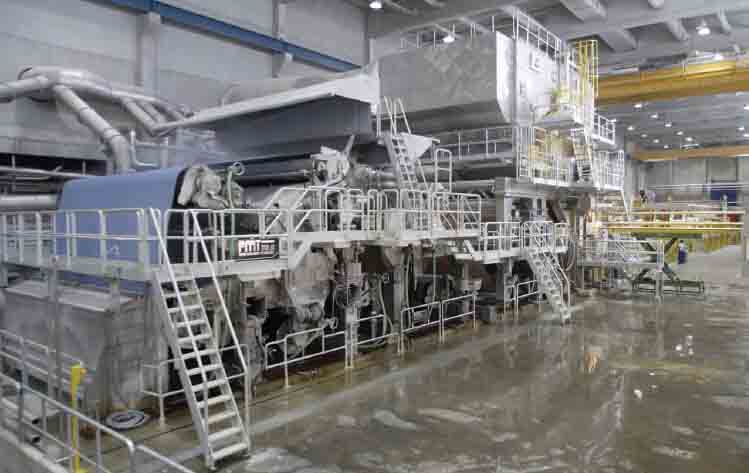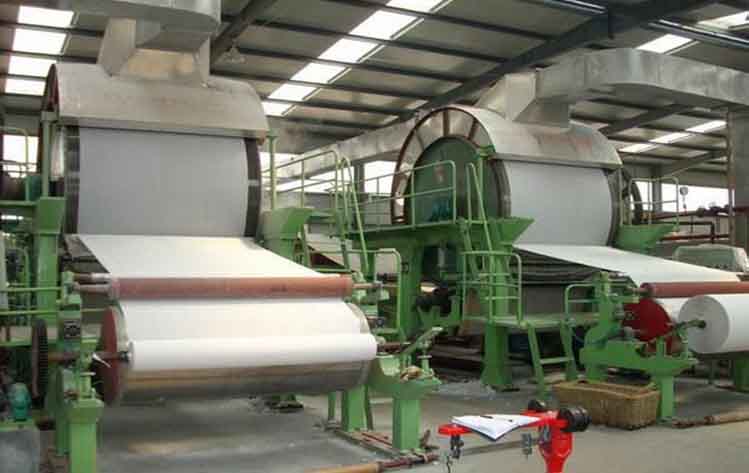Toilet paper machine mainly consists of raw materials to semi-finished products, and the post-processing equipments mainly consist of semi-finished products to finished products.
Working principle of toilet paper machine
Toilet paper machine is a machine for making the pulp water suspension which meets the paper making requirements into paper by a process flow of dewatering and forming by screen, dewatering and drying mechanical pressing. Toilet paper machine includes three main parts: forming, pressing and drying of the above process, and it is equipped with necessary trimming device, rolling device and transmission device, as well as auxiliary systems used for pulp supply, pulp and white water circulation, vacuum, ventilation, and broken paper handling and lubrication, self-control, etc. The specifications of toilet paper machine are often confirmed in terms of the width of the paper formed (referred to as production width), the width of copper mesh and the preferred working speed. The modern large-scale paper machine has reached up to 11m in production width, more than 1000m/min in working speed, and several hundred tons in daily output. The weight of the whole machine is more than 1000tons and 100m. In common developing countries and the productions of some specialty papers, small toilet paper machine is used, which has a width of 1-3m and a working speed of 10-200m/min.
Working flow of toilet paper machine
According to the requirements of the paper making process, toilet paper machine has various structural forms, and consists of the components such as feeding, forming, pressing, drying, trimming, rolling and transmission and auxiliary equipments.
The post-processing equipments of toilet paper machine can be divided into the roll type paper processing equipments and the square type paper processing equipments.


Roll type toilet paper processing equipment
Roll type toilet paper processing equipment mainly includes a rewinding machine, band saw paper cutter, sealing machine, which is used for 1-3 layers of rewinding and small-roll cutting and packaging into finished products.
Square type toilet paper processing equipment
Square type toilet paper processing equipment mainly includes the net cage rewinding machine, the paper cutting saw with plate and band saw paper cutter, which is mainly used for rewinding square paper, cutting into the strips and then re-cutting into squares.
Toilet paper machine is specially used for toilet paper production. AGICO owns more mature paper making process and technology, and we can provide you with best quality paper equipments. Welcome to contact with us!

